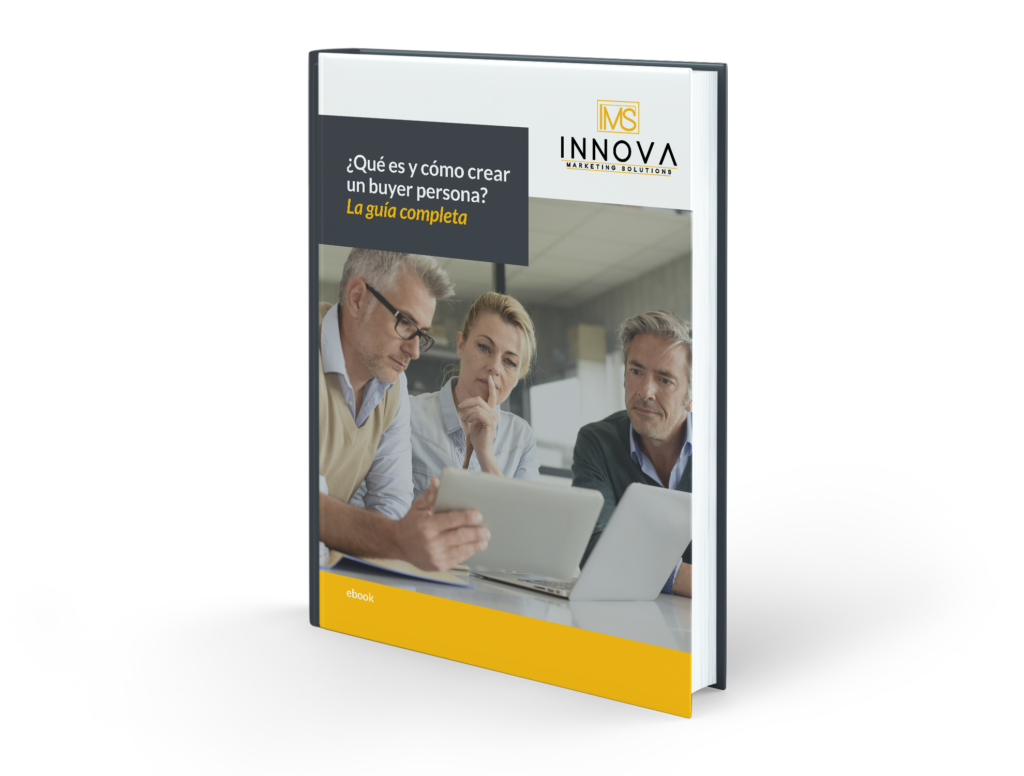Reading time: 5 minutes.
You've probably heard the expression "content is king" a million times, but when you understand what inbound marketing is all about, you realise that this phrase is much more powerful than it sounds.
It can have a valuable impact on both your company and your customers and statistics confirm this: 57-70% of B2B buyers often investigate various options before contacting the seller; therefore the first impression will be vital for their final purchase decision.
Inbound marketing is about creating valuable experiences for your customers and letting them find you. A content that does not seek a direct sale, but to create an atmosphere of service, trust and closeness between your brand and your customers. The basic strategy of this formula is to create useful content (blogs, landing pages, videos, ebooks, etc.) that provides the audience with a practical solution to their problems or doubts, that attracts them without pursuing them or resorting to traditional advertising techniques to get their attention.
How does Inbound Marketing work?
This philosophy is based on understanding changes in online user behavior to create strategies that increase the chances of attracting our audience to valuable content. It is important to consider that 47% of buyers consume at least 3 to 5 pieces of content before deciding to contact a sales representative. This is the perfect opportunity for them to identify with your brand.
For example, if a person needs information about an exercise routine, he will first Google it. If you have a company that sells sportswear and you provide the quality content that your audience is looking for, you will increase your chances of strengthening ties with your users and positioning yourself as an expert or leader in your area, in this case, on issues related to fashion and sport.
Its main tool is the strategic content created in order to captivate the potential client. This must be accompanied by promotion and awareness strategies that allow each piece to reach the right user. According to Demand Metrics, content marketing costs 62% less than traditional publications (billboards, ads, screens, brochures) and generates almost 3 times more leads.
The Inbound Marketing Cycle
Once the client finds you, your goal is to establish a connection. The user is so interested in your contribution that they want to know more and join some of your conversation channels: email, chat, social networks. To achieve this, your content must be of quality, attractive, interesting, innovative and updated. For example, creating a campaign in relation to prevention and care with the arrival of COVID-19 will send a message to your users: we are more than a sales machine, we are human and we care about the collective wellbeing.
After capturing their attention, you must maintain their interest through established connections and this is where email marketing and social media strategies come in. According to HubSpot, it is important to create content in these channels whose text is sufficiently descriptive and attractive that it can be positioned correctly, since it will be the basis of the users' search.
The ideal result is that this process becomes a cycle in which your company gains prestige, clients who are truly interested in your niche and your followers receive valuable information. That it becomes a constant exchange over time with the win-win formula.
What is and how to create a Buyer Persona?
The Complete Guide

How do I apply it for my company?
The three key stages of the inbound marketing methodology, according to HubSpot, are as follows:
1. Attract: Apply all content marketing efforts with one premise in mind: What does your customer need and what can you bring to them? 80% of business decisions are inclined in favor of the information the brand provides through a series of articles over paid advertising; this is where the importance of having quality content focused on offering a solution rather than just a product for sale lies.
So use blogs, videos, websites, social networks and other creative strategies to build your authority on the Internet.
2. Connect: this stage is the door that opens communication with the user. If they have already expressed an interest in your content, it is time to start a conversation through different channels and conversion tools such as chats, email, forms.
95% of shoppers choose solutions that provide them with rich content that helps them navigate through each stage of the buying process.
Make sure your different pieces can encompass your buyer person during each stage of the customer journey, as well as your conversations after the attraction, so that they increase your chances of turning a lead into a purchase.
3. Delight: Take advantage of the different media to constantly send new information, study the analytics and produce more relevant content that will delight your audience. As the name suggests, this cyclical process should not stop when you first engage your users.
On the contrary, this is the ideal time to provide more valuable content. HubSpot claims that customers spend 50% of their time online interacting with personalized content, and we want them to get it from your brand, rather than from the competition.
Do you want to develop a successful inbound marketing strategy that will help you achieve great results and maintain good relationships with your audience in the long term? We can help you create content that generates leads to increase your sales, contact us here!



